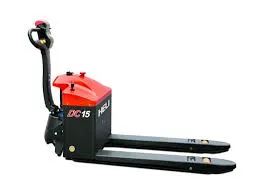


Understanding Fall Arrest Systems A Critical Component for Safety in High-Risk Environments
In various industries, particularly construction, maintenance, and aviation, workers often find themselves exposed to heights. The risk of falling from elevated surfaces poses significant safety dangers, making the implementation of effective safety measures paramount. One of the most critical safety measures in these environments is the Fall Arrest System (FAS).
A Fall Arrest System is designed to safely stop a worker's fall from a height and minimize injury. It comprises a combination of equipment and strategies that ensure the safety of workers engaged in tasks where they are at risk of falling. The primary components of a fall arrest system typically include harnesses, lanyards, anchorage points, connectors, and sometimes deceleration devices.
Components and Functionality
1. Harnesses The safety harness is worn by the worker and is perhaps the most recognizable component of the fall arrest system. It is designed to distribute the forces exerted on the body during a fall, thus reducing the risk of severe injury. Harnesses should always be properly fitted and maintained to ensure maximum protection.
2. Lanyards and Connectors Lanyards are used to connect the harness to the anchorage point. These can be adjustable or shock-absorbing, with the latter type designed to reduce the fall forces on the body by elongating during a fall. Connectors such as carabiners facilitate the easy attachment of the lanyard to various anchorage points.
3. Anchorage Points These are secure points to which the fall arrest system is connected. Proper identification and assessment of anchorage points are vital. They must be capable of supporting the intended loads and designed to withstand potential fall forces.

4. Deceleration Devices In some cases, additional devices, such as self-retracting lanyards or fall limiters, may be utilized to provide controlled descent in case of a fall. These devices not only stop the fall but also help to minimize the distance fallen, thereby reducing the risk of injury.
Importance of Training and Compliance
While the fall arrest system is an effective safety measure, it is crucial that workers are adequately trained in its use. Comprehensive training encompasses the proper fitting and adjustment of harnesses, understanding the system's components, and practicing emergency procedures. Workers should also be taught how to identify fall hazards and the importance of using the system consistently.
Compliance with safety regulations is another critical aspect. Organizations must adhere to guidelines set by occupational safety authorities, such as OSHA in the United States, which outlines specific standards for fall protection systems. Regular inspections and maintenance of the equipment are necessary to ensure that the systems remain functional and reliable over time.
Conclusion
In conclusion, Fall Arrest Systems are vital for safeguarding workers in height-sensitive occupations. The correct implementation of these systems can significantly reduce fall-related injuries and fatalities. However, their effectiveness relies not only on the equipment itself but also on the training, proper usage, and adherence to safety regulations. As industries continue to develop, the design and technology behind fall arrest systems will evolve, yet the fundamental principle remains protecting the lives of workers is of utmost importance in any workplace. Ensuring that they can perform their tasks safely while being protected from falls can lead to a more productive and safe working environment for all.



